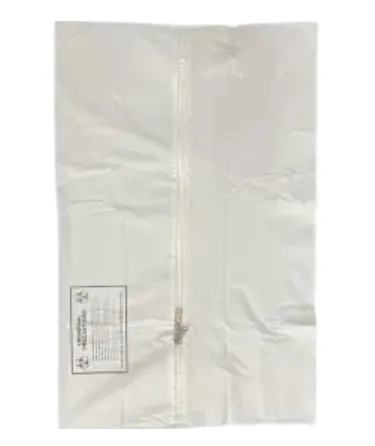Apr . 08, 2025 10:23 Back to list
Characteristics and Applications of Post Mortem Bag
Post Mortem Bag, As an important forensic and funeral aid tool, it plays an indispensable role in modern society. It is not a simple packaging container, but is specially designed and manufactured to handle and transport bodies safely, healthily, and with dignity. A deeper understanding of the characteristics and wide applications of Post Mortem Bag can help us better understand its importance.

The primary characteristic of Post Mortem Bag is its unique material
The common Peva Post Mortem Bag is made of high-strength, leak proof, corrosion-resistant materials such as polyethylene (PE) or polyvinyl chloride (PVC). These materials not only effectively prevent fluid leakage and avoid pollution to the environment and surrounding personnel, but also resist the effects of harsh environments such as corrosive chemicals and extreme temperatures. In addition, some advanced Heavy Duty Post Mortem Bags will also add special ingredients such as antibacterial and anti mold to further inhibit bacterial growth and slow down the decay rate of the body.
The design of Post Mortem Bag considers usability and security
The Economy Post Mortem Bag features a sturdy zipper for easy opening and closing, and the zipper often comes with a double sealed design to ensure complete sealing. The surface of the bag is usually equipped with identification card slots for recording relevant information about the body, such as name, number, location of discovery, etc., to facilitate subsequent identification and investigation. For the convenience of handling, Post Mortem Bags are often equipped with reinforced handles or straps, which have strong load-bearing capacity and ensure safety during transportation. The color of Post Mortem Bag is usually black or dark blue, not chosen arbitrarily, but to protect the dignity of the deceased and respect public emotions. Dark colors can conceal the body, reduce the visual impact on the public, and avoid unnecessary panic and negative emotions.
The application scope of Post Mortem Bag is extremely wide
Forensic identification: In complex environments such as crime scenes and disaster scenes, Post Mortem Bag With Handle is used to collect and preserve bodies, prevent evidence loss or contamination, and provide a foundation for forensic identification.
Disaster relief: After natural disasters such as earthquakes and floods, Post Mortem Bags are used to quickly and efficiently handle the bodies of victims, prevent the spread of diseases, and maintain public health.
Funeral services: Post Mortem Bag is an important component of funeral services, used to transfer bodies from hospitals, homes, etc. to funeral homes or cemeteries, facilitating subsequent procedures such as body farewell and cremation.
Military operations: On the battlefield, Post Mortem Bags are used to collect and transport the bodies of fallen soldiers for identification and burial.
Hospital morgue: Post Mortem Bag is used to store and manage bodies awaiting processing, and maintain a hygienic environment in the morgue.
In summary, Post Mortem Bag plays an important role in forensic identification, disaster relief, funeral services, and other fields with its unique materials, user-friendly design, and wide range of applications. It is not only a practical tool, but also reflects respect for life and care for the deceased. Understanding and valuing the characteristics and applications of Post Mortem Bags can help us better handle the special moments of end-of-life, maintain social order and public health.
Post Mortem Bag FAQs
What is the main purpose of Post Mortem Bag
Post Mortem Bags are mainly used for safe and hygienic transportation and preservation of corpses. It can prevent bodily fluid leakage, reduce odors, and lower the risk of infectious disease transmission. In addition, it can also protect the body from external contamination and ensure the accuracy of forensic examinations.
What materials are commonly used to make Post Mortem Bags
Post Mortem Bags are typically made of high-strength waterproof materials such as polyethylene (PE) or polyvinyl chloride (PVC). These materials have the characteristics of corrosion resistance and impermeability, which can effectively isolate body fluids and odors.
What are the design features of Post Mortem Bag
Waterproof sealing: prevents leakage of bodily fluids.
Zipper design: convenient for placing and removing the body.
Identification area: used to record information about the deceased or case number.
Handle or shoulder strap: easy to transport.
Durability: Able to withstand significant weight and pressure.
In which scenarios is the Post Mortem Bag used
Crime Scene: Used for transporting the remains of victims.
Disaster scene: Large scale casualties such as earthquakes, floods, etc.
Hospitals or funeral homes: temporary storage of bodies.
Infectious disease prevention and control: used to isolate bodies that have died from infectious diseases and prevent the spread of the disease.
What should be noted when using Post Mortem Bag
Health and safety: Operators should wear protective equipment such as gloves to avoid direct contact with the body or bodily fluids.
Correct sealing: Ensure that the zipper is fully closed to prevent leakage.
Clear identification: accurately fill in the deceased's information to avoid confusion.
Compliance handling: Dispose of the body in accordance with local laws, regulations, and hygiene standards.
-
Efficient Shroud Kit Pack Factory Solutions for Global Supply Chains
NewsNov.24,2025
-
Leading Shroud Kit Pack Exporter Solutions – Durable & Sustainable Packaging for Global Trade
NewsNov.23,2025
-
Reliable Shroud Kit Pack Manufacturer for Global Packaging Solutions
NewsNov.23,2025
-
Comprehensive Guide to Shroud Kit Pack Supplier: Global Insights & Industry Trends
NewsNov.23,2025
-
Reliable Shroud Kit Pack Suppliers for Global Protection & Logistics
NewsNov.22,2025
-
Shroud Kit Pack Exporters: Reliable Global Cargo Protection Solutions
NewsNov.22,2025





